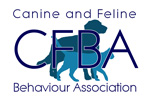Safety With Children and Dogs During the Coronavirus Lockdown Using the R.I.S.E. Safety Method.
Respect. Teach your child to respect your dog and its space.
Involve. Include your child during dog-based activities such as walking, feeding and general care to increase mutual respect.
Supervision. Always know where your dog and child are and what they are doing.
Education. Provide on-going input to your child to help ensure appropriate interactions.
Keeping children safe around dogs in and out of the home is always a subject close to my heart, and so this article intends to address the various risk-factors that I feel should be considered in households that contain children and dogs together during the Coronavirus lockdown, and of course, most of these measures will apply at any time of the year when children and dogs are coming together.
In my work as a dog expert witness (assessing dangerous dogs) and a dog behaviourist (overcoming dog behaviour problems), I am regularly involved in cases whereby a dog has nipped or bitten a child and I often see a spike in such cases during school holiday periods whereby children are at home and indirect (and sometimes unsupervised) contact with the family dog.
At the time of writing this article (mid-April 2020), it is thought that nearly a third of the world’s population is in a lockdown state and this inevitably means that there are countless families with their dogs doing their best to get through the Coronavirus lockdown in what may in some circumstances be less than ideal conditions. By ‘less than ideal’, I am referring to limited space, and whilst a child would normally be at school at this time of year, one or both parents at work, and a dog in daycare or with another family member each day, all of those routines have changed and it can be a real challenge for parents, dogs and children to work out these new and longer-lasting family dynamics that are now in place virtually overnight.
Children and dogs. Avoiding basic mistakes
As a result of my exposure to cases where children have been nipped or bitten in the home by the family dog, I have seen that most of these incidents could have been avoided if a number of simple, practical measures had been put in place beforehand. We’re all wise with hindsight of course, but taking a few minutes to go through this resource will hopefully avoid any accidents at home between your dog and child.
Children and Dogs. Mutual love and enjoyment
Let’s not forget that for your child, having a dog in his or her life can be one of the most life-affirming and positive experiences they can have. A great deal has been written about the benefits of dogs with children. I believe it is a mutually positive arrangement for the dog as well as the child as we know that children can develop essential life skills such as greater levels of confidence, empathy and higher self-esteem as a result of living with a family dog. They can also help children cope with stress, teach positive responsibility and get children out of the home, whilst providing stability and companionship. In many cases, a child will experience the arrival of a new puppy and the excitement, joy and hard work that it entails, and is also likely to experience the difficult transition when a dog may become ill and passes away. This wide range of experiences and emotions can teach our children so much, providing many important lessons on life and the cycles that we all experience and are subject to.
Children and Dogs. What could possibly go wrong?
When everything goes to plan and your child is well behaved and calm around your well-trained dog, life is good. However, if you should find yourself with a young dog that is still in training, full of exuberant energy and looking to stay mentally engaged a lot of the day and a child (or children) that is also high energy, maybe bored and looking for something a little mischievous to do, then you just might have a recipe that could end less than positively.
Most half-term durations are a week or two with longer holidays over the summer period, but as I type we are already in week four of the Coronavirus lockdown and no immediate end in sight for the all-clear to be given to return to school for the children and work for parents. Tensions are likely to be running high due to the constraints of family living under lockdown conditions and there could well be more examples of frustration related behaviour from both children and dogs.
People may be living with different family groups during lockdown conditions in an environment where dogs and children are unfamiliar with each other. Looking at the bigger picture, an observation I have made over the years is that a number of bites to children are not just to children and dogs living in the same home, but to children visiting the home of friends or relatives and the resident dog may not be used to children, or that the way the visiting child may be interacting with the dog in a manner that it is not used to. So for example, the visiting child may have a dog at home that can (apparently) tolerate hugs and kisses and inevitably the child thinks that it can interact with all other dogs in the same way.
A case comes to mind from last summer, whereby a girl visits her cousin and the cousin owns a large dog that is normally well balanced and fits in well with family life and has no history of aggression to children in or out of the home. The girls were playing in the bedroom together and the dog enters into the room as they play. Everything is fine until the visiting cousin attempts to hug the dog around the neck, and as a result receives a single bite to her chin, which required a cleanup and a light dressing as in this case it was not too serious as bites go. A warning bite that could easily have been more serious given the circumstances and general area of the face. From memory, the visiting child was much more energetic than the dog is used to from children and interacted with her own dog in a way that many dogs would find stressful, so should you have other children visit your own household, think about how the dynamic might work out between your dog and the visiting child and put measures in place accordingly.
Dog and child freedoms based on age groups
One aspect I have yet to address is the various age groups of children and what measures one can be expected to put in place based on the age of that child. There are no hard and fast rules that must be followed based on age bands, and so a good deal of common sense must be used in each and every case. The main variables as I see it are the likely behaviour of the child towards the resident dog, and then the likely behaviour of the dog towards the child and the resultant relationship (and inherent risk) from each of these two.
As a parent reading this article, you will need to carry out an honest assessment upon both your child and the dog (that may be plural in either case, so it can get complicated I know) and the level of risk that exists based on the combination in your home. In my experience, both dogs and children can vary from predictable, calm and relaxed, to hyper-active and depending on the individual energies, this can either lead to high levels of confidence that you are not likely to have an issue in the home or, you may see that under the wrong set of circumstances that the risk could be moderate to high that there could be an accident of some description between your child and dog. Once you have taken into account these variables, you will need to act and manage them accordingly.
In an attempt to set out my own thoughts in terms of what can be expected of a dog and child at various ages, I have set out below a number of age brackets as a guide. As already mentioned above, the actual decisions you make can vary once you consider the age and sensibilities of the child involved and the temperament of the dog. Another variable, of course, is the age of the dog. The difference of behaviour between a puppy, adolescent or adult dog is huge, so this will also need to be taken into account when making your decisions in terms of supervision. One should also take into account the size and breed of the dog, as these factors further determine risk between your dog and child.
- Children aged 0-5 Years. Never leave a child alone with a dog. Direct supervision is always necessary.
- Children aged 5-10 Years. If your own assessment of your dog and child leads to high levels of trust, you can start to step out of the room for short spells to make drinks or a visit to the bathroom.
- Children aged 10-16 Years. This is an interesting age band as the difference between 10 and 16 can be profound, but otherwise, depending on the dog and child, there can be increasing amounts of time alone together in keeping with your trust of the dog and child.
- Young adults aged 16-21. No longer children of course, but this age group is still young and depending on their experience, may still be learning about dogs and how to read body language and how to care for a dog.
N.B. There is likely to be some ‘blurring’ between the various age groups I suggest as these bands are not always clear. The age bands I am most concerned about is 0-5 and 5-10 years, and once children are getting into their teens, bites and inappropriate behaviour between dogs and children usually tapers off.
Children and dogs. A statistical analysis that gives cause for concern
An interesting article I found on the subject of dog bites to children published in Psychology Today (https://www.psychologytoday.com/us/blog/canine-corner/201102/why-children-suffer-the-greatest-risk-dog-bites) states that based on statistics says that:
“Children below the age of 15 account for approximately 60% of all of these dog bites, with the most vulnerable group being kids around 5 to 9 years of age. If we break down the statistics a bit more, we find that two-thirds of the children that are bitten by dogs are boys.”
The article goes on to say that boys are most at risk due to unfounded levels of confidence in their ability to read dog body language signals. As a part of the test, the children were shown pictures of dogs displaying a variety of canine emotions to see if they understood each one correctly. Alarmingly, the children were only able to identify the emotions correctly 17% of the time.
The various canine emotions were correctly identified as follows:
Joy 21%
Submission 10%
Attack 7%
Threat 8%
Fear 34%
Friendliness 21%
As the article states, only one in three children were able to correctly identify fear in dogs, which is when it is most likely to bite. Of greater concern is that only 7% recognised body language prior than attack and 8% for a threat. With similar results for boys and girls, 41% of the girls correctly recognised fear in dogs, whereas only 29% of the boys did. This clearly demonstrates the point that children require a great deal more education on dog body language and as a result, direct supervision will need to be increased to avoid accidents.
The study asked the children who the dog obeyed the most in the family. 34% of the boys said that the dog responded better to them than anyone else in the family, while 28% of the girls said this. This I think highlights the misplaced confidence children can have with dogs. Interestingly, 64% of these children admitted that they walk the dog alone without adult supervision.
Dogs and child safety. Prevention of accidents is always better than a cure
In the circumstances of the current Coronavirus lockdown, children not known to your dog are unlikely to be visiting the home, so this element is of less concern at present and that leaves us with managing our own children with our own dogs in our own home.
The earlier case of the dog biting the girl to the face when trying to hug the dog is admittedly rare, but not rare enough and there are numerous other cases that have had much worse outcomes, either in terms of injuries to the child or in some cases fatalities, which is a disturbing worst-case scenario.
So, coming back to the core reason for putting this article together, I am admittedly a little anxious with so many children and adults at home with dogs without the ability to spend extended periods in parks or in public to escape the compressed feeling of being under lockdown conditions.
I have coined the acronym R.I.S.E. to help easily set out the basic principles of how children can best relate to dogs living in the same household, and it attempts to see past the emotional pet dog element and focusses more on the fact that there is an animal in the home that requires sensible boundaries and rules to follow that differ from the needs of a human. I am of course aware that many of those needs are in fact similar, and this is why dogs make such good pets, but finding that balance between pet dogs and animal keeping can go a very long way to avoiding bites to children in the home.
So let’s look at the R.I.S.E. points together in a little more detail and then I shall conclude this article.
- Respect. Teach all the children in the household to respect your dog and its space. Dogs that are eating, resting, sleeping or chewing a bone should be left well alone. Your dog should have at least one space that a child cannot encroach upon. Examples of this would be a lockable crate or cage to place your dog in for appropriate lengths of time or another room that can be securely closed off whilst they eat, rest or chew a bone. Children should not be sitting or lying on dogs. They should not be kissing them anywhere on the dog’s body, not hugging them around the neck.
- Involve. Include your child during dog-based activities such as walking, feeding, play and general care to increase mutual respect for each other. Dogs are generally willing to take direction and wish to please us, humans, in the process. Placing your child alongside you during the activities I describe above is a sensible first step to demonstrate first hand how to carry out these basic, daily functions with your dog. Over time, your dog will see the parent and child as a combined authority figure and see the child as a bringer of positive experiences as you teach your child how to responsibly carry out these activities under your direct guidance.
- Supervision. This point is actually the most important. Always know where your dog and child are and what they are doing. Ask yourself where is your dog, where is your child? What are they doing together? Are your child and dog relating to each other in a safe, appropriate manner? The amount of supervision is likely to sit alongside the age brackets I describe above.
- Education. Provide on-going input to your child appropriate to the child’s age to help ensure appropriate interactions and a deeper understanding of your family dog and the behaviour it exhibits. Take time to discuss your dog’s behaviour and avoid humanising certain actions as this obfuscates the true meaning behind the dog’s actions. Correctly reading a dog’s body can make the difference between a bite and not.
In conclusion.
When supervised and educated correctly, dogs and children can bring a great deal of joy to each other as well as the wider family, but once areas of safety and mutual respect are neglected, the risk factor starts to creep in and accidents can and do happen.
Please take care during this time and of course at all times when bringing dogs and children together.








